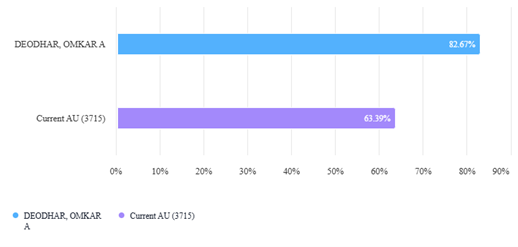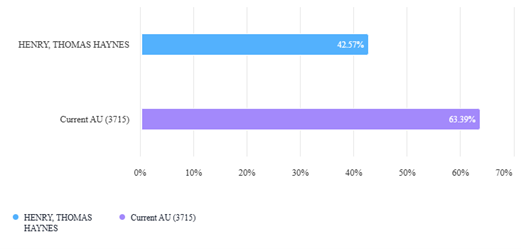What? The Pokémon Company’s Patent Applications Are Evolving!
- February 19, 2025
- Snippets
Practices & Technologies
Software & ComputingIn September of last year, and in light of a corresponding Japanese patent infringement suit, I published an article detailing how The Pokémon Company had filed two patent applications at the United States Patent and Trademark Office (USPTO) after the release of Palworld. [1] I strongly recommend you read that post as background prior to reading the remainder of this one. Regardless, though, of particular interest is that these two patent applications by The Pokémon Company were filed using the Track One program at the USPTO in which an applicant pays a fee to have the examination of their patent application substantially expedited (the USPTO attempts to provide the applicant with a final disposition, which is either an allowance or a final rejection, within at most 12 months). Given that we’re now much closer to that 12-month mark for both of those applications, and we have some additional information regarding the lawsuit in Japan, I think it makes sense to check back in on the status of a potential Pokémon vs. Palworld patent lawsuit in the U.S.
The first important data point since my last post is that PocketPair announced the target JP patents involved in the JP patent infringement lawsuit. [2] This list was not surprising to many of us [3], and, in fact, three of the four JP patents I considered in my U.S. analysis last year were the three JP patents on that list. As a result, the four U.S. patent applications I identified last year are still worth considering in light of the Pokémon vs. Palworld dispute. To maintain consistency, I’ll continue to refer to these four U.S. patent applications as: U.S. App. No. 17/949,666 (“US-App-1”), U.S. App. No. 17/949,831 (“US-App-2”), U.S. App. No. 18/652,874 (“US-App-3”), and U.S. App. No. 18/652,883 (“US-App-4”). Interestingly, though, a fifth U.S. patent has come onto the scene. In November of 2024, U.S. Pat. App. No. 18/776,729 (“US-App-5”) published. This application was filed even later than the previous four patent applications (filed on July 18, 2024) and was, like its sister applications, filed with a Track One request for expedited examination.
The first independent claim of US-App-5 presently recites:
1. A method for game processing implemented via an information processing system having at least one processor, the method comprising:
generating data for display of a player character and a first virtual character disposed in a virtual space;
determining an aiming direction based on a direction input; and
in association with the player character performing a first game action:
generating data for display of a first aiming point associated with the aiming direction;
generating data for display of an indicator indicating a likelihood of success of the player character obtaining the first virtual character;
selecting an obtaining item, from a plurality of obtaining items, by performing a first operation input;
generating data for display of the player character launching, in the aiming direction, the obtaining item for obtaining the first virtual character in the virtual space, based on a second operation input;
determining obtaining of the first virtual character, by the player character, as successful in association with the obtaining item arriving within a vicinity of the first virtual character; and
generating data for display of setting the first virtual character as being in possession by the player character in association with determining the first virtual character as successfully obtained, and
in association with the player character performing a second game action:
generating data for display of a second aiming point associated with the aiming direction;
generating data for display of the player character launching, in the aiming direction, a first virtual object representing the obtained first virtual character, based on a third operation input; and
generating data for display of the first virtual character and a second virtual character starting fighting against each other in the virtual space.
Without getting too much into the weeds on the construction (i.e., meaning) of each of the claim terms above, this arguably seems to cover the general idea of aiming an “obtaining item” (e.g., a pokéball or, potentially, a pal sphere) at a “first virtual character” (e.g., a pokémon or, potentially, a pal), launching that “obtaining item” at the “first virtual character”, successfully “obtaining” (e.g., capturing) that “first virtual character”, and then later launching the “first virtual object” that represents the “obtained first virtual character” (e.g., the captured pokémon or, potentially, captured pal) to fight against “a second virtual character” (e.g., another pokémon or, potentially, another pal or a player character). Obviously, this type of claim could very likely be relevant to any potential U.S. patent litigation between the two entities.
Now, it gets even more interesting when we check in on how each of these patent applications is progressing through the USPTO. We’ll skip over US-App-1 and US-App-2, as, like I described in the previous article, both of those were filed in September 2022 (and, therefore, are unlikely to be intentionally targeting Palworld). However, how are US-App-3, US-App-4, and US-App-5 progressing? What? The Pokémon Company’s patent applications are evolving! [4]
As far as US-App-3 goes, it initially faced an uphill battle receiving rejections under 35 U.S.C. § 101 as directed to non-statutory subject matter. According to judge-made patent law in the U.S., you cannot get a patent on claims that cover laws of nature, natural phenomena, or abstract ideas. I won’t get overly bogged down regarding § 101 rejections here, but suffice it to say, overcoming a § 101 rejection when your invention primarily relates to software is typically no small feat.
Notwithstanding, on October 18, 2024, The Pokémon Company amended their claims in response to the rejection. Soon thereafter (on November 4, 2024), the USPTO allowed the patent application. Unsurprisingly, The Pokémon Company very quickly (on November 12, 2024) paid the issue fee and the patent issued as U.S. Pat. No. 12,179,111 on December 31, 2024. Hence, in only about 7 months, and with only one round of claim amendments, The Pokémon Company ended up with a patent here.
For the patent savvy among us, I will note that, in order to overcome the § 101 rejections, counsel for The Pokémon Company interviewed the examiner and then argued the following in the response:
[The claim features] are directed to specific improvements in video game and/or software technology. In more detail, Applicant’s specification explains … that certain conventional game programs allow a player character to catch a character only during a fight, and does not allow a player character to catch a character on a field. Thus, such game programs limit the variety of actions a player can perform on a field in a virtual space.
… Applicant’s approach improves upon drawbacks in the conventional technology, in part, by allowing for a “first mode” where a player character can launch “a catching item” for catching the field character, and set the “field character” in a player’s possession upon successfully catching the character. The approach also includes a “second mode” where the player character can be caused to launch “a fighting character” where a field character and fighting character may start fighting. In doing so, the features advantageously enable the game program to allow a player character to perform a variety of actions on a field in a virtual space.
While I will refrain from taking a stance on whether the above should be sufficient to overcome § 101 without reviewing the application further, I will note that such a response is rather barebones and, in my experience, would be unlikely to persuade an examiner who had previously issued a § 101 rejection. Last thing I will say on that topic is that, based on the examiner an applicant is assigned at the USPTO, your results may vary wildly in terms of outcome (particularly on § 101 issues). Further, the examiner assigned according to US-App-3 (Omkar A. Deodhar) seems to be on the easier side, with a significantly higher allowance rate than the rest of their art unit, as evidenced by the statistics provided by Juristat below:
So, how about US-App-4? As I noted previously, US-App-4 received a first Office Action on July 31, 2024, where the claims were primarily rejected under 35 U.S.C. § 103 as allegedly obvious over two prior art references (one is a published patent application assigned to Tencent and the other is a published patent application assigned to Microsoft). The Pokémon Company then responded by interviewing the examiner and filing a response on October 30, 2024, with a set of claim amendments and arguments. Thereafter, on December 4, 2024, the examiner issued a final rejection maintaining that the independent claims were obvious under 35 U.S.C. § 103, but adding a new prior reference to the rejection (a published patent application assigned to DreamWorks Animation).
One interesting note here, the examiner assigned to US-App-4 is different from the examiner assigned to US-App-3. This examiner is significantly more difficult (at least based on statistics) than the examiner assigned to US-App-3 (e.g., 42.57% allowance rate for the US-App-4 examiner vs. 82.67% allowance rate for the US-App-3 examiner), despite their being in the same art unit (Art Unit 3715).
However, in the final Office Action for US-App-4, the examiner did indicate that dependent claim 22 (which The Pokémon Company added in response to the first Office Action) would be allowable if rewritten in independent form, So, where does that leave us with US-App-4? Basically, The Pokémon Company has until March 4, 2025 to respond (or until June 4, 2025 if they are willing to pay for an extension of time, which the USPTO will automatically grant). Some have surmised that The Pokémon Company hasn’t responded yet as they are weighing the difficult decision of only having one claim allowed versus fighting for more. [7] This is not the case, in my view. First, it is very common to respond to Office Actions just before the three-month due date, as it takes significant time for an attorney to review the Office Action, weigh potential response strategies, discuss the merits of the potential response strategies with their client, potentially interview the examiner, and formalize / file a response. Hence, I wouldn’t read almost anything into a failure to respond much before the three-month date. Further, while it is true that The Pokémon Company and its counsel are undoubtedly weighing whether or not to take the narrower subject matter of claim 22, this is most certainly not a choice between ending up with a single claim or with multiple claims. If The Pokémon Company were to take the allowable subject matter of claim 22, they would likely do so by amending claim 1 (and the other independent claims, e.g., claims 8, 9, and 17) to include the subject matter of claim 22. The other dependent claims (e.g., claims 2, 3, etc.) would still remain in the application (i.e., they wouldn’t need to be cancelled); they would just be inherently narrowed as a result of depending on a now-narrowed independent claim (e.g., claim 1).
If I were a betting man, I would guess that counsel for The Pokémon Company crafted claim 22 as a fallback position in response to the previous Office Action. Additionally, I would assume that that fallback position was crafted in such a way that The Pokémon Company believes maintains relevant coverage of Palworld (i.e., still would arguably be infringed by some aspects of Palworld). Hence, I wouldn’t be at all surprised if we see a response to the final Office Action filed by The Pokémon Company close to the three-month date of March 4, 2025, in which The Pokémon Company accepts the allowable subject matter of claim 22 and attempts to move to allowance.
Lastly, how about the new one on the block, US-App-5? Well, this application received a non-final Office Action on September 10, 2024 (a few months before it even published). Further, US-App-5 was assigned to the same examiner as US-App-3. Hence, in this Office Action, perhaps unsurprisingly, and like in US-App-3, the examiner only gave rejections under 35 U.S.C. § 101. Thus, also predictably, The Pokémon Company amended their claims in US-App-5 in a strikingly similar fashion to the amendments made in US-App-3, resulting in the claim that I reproduced above for US-App-5. Worth noting, the resulting claims in US-App-5 are very similar to the ultimate claims of US-App-3.
Upon amending in response to the non-final Office Action, and like in US-App-3, the examiner in US-App-5 thereafter issued a Notice of Allowance, The Pokémon Company paid the issue fee, and the patent just issued on Tuesday (February 11, 2025) as U.S. Pat. No. 12,220,638. Given that it was the same examiner, with the same type of rejections, and very similar resulting claims, I won’t belabor the analysis above. Suffice it to say, much of what was said regarding US-App-3 could equally be said here regarding US-App-5.
So, what happens next now that Nintendo / The Pokémon Company have two issued patents and likely a third one on the horizon, especially given that these patents were likely intentionally crafted to target Palworld? Well, I think this moves the needle in a few ways.
First, this will likely strengthen Nintendo / The Pokémon Company’s position in any ongoing negotiations, including settlement negotiations regarding the Japanese patent suit. Most settlement negotiations include discussions of all jurisdictions, not just the jurisdiction presently in suit. For example, a defendant wouldn’t want to just settle a patent infringement suit in Japan if they could then immediately be sued under similar patents in the United States. Thus, the discussions will likely also consider potential infringing acts in other jurisdictions and, as Nintendo / The Pokémon Company’s portfolio of potentially relevant patents expands, so too will their negotiating power in terms of settlement price or injunctive actions.
Second, I think PocketPair will likely consider being on the offensive regarding attacking these newly issued patents. In other words, rather than sit around and wait to be sued in the U.S., one proactive strategy would be to attempt to invalidate the patents at the USPTO. There are two primary proceedings that can be used to attempt to invalidate patents at the USPTO, a Post Grant Review (PGR) and an Inter Partes Review (IPR). A PGR can be filed within 9 months of a patent issuing and any potential argument for patent invalidity can be raised, whereas an IPR can be filed more than 9 months after issuance, but is limited to only arguments of claims being anticipated or rendered obvious by the prior art (based on printed patents / publications). Clearly, the PGR provides more options.
Thus, if I were PocketPair or their counsel, I would consider filing a PGR at the USPTO that attacks the newly issued Nintendo / The Pokémon Company patents on multiple grounds. For example, perhaps the new patents are ripe for attack on grounds of § 101 (e.g., by arguing that the patent examiner didn’t adequately judge the claims to represent an abstract idea) or on grounds of §§ 102 / 103 (e.g., by arguing that there are references, such as previous patents or video games that existed before the filing date of the patents in question, that the examiner failed to consider and that include all of the features of the claimed invention). Even further, perhaps PocketPair could argue that the patents of US-App-5 and US-App-3 are too closely related to one another and that one should be invalidated for nonstatutory double patenting (which is a doctrine in patent law that says an applicant cannot receive multiple patents for obvious variations of the same invention, unless they file what is known as a terminal disclaimer, which it does not appear that Nintendo / The Pokémon Company have done).
Overall, I think what happens next depends mostly on PocketPair’s appetite for taking on Nintendo / The Pokémon Company. If PocketPair is willing to fight, then there are strategies they can certainly use (e.g., the PGR described above). If, however, PocketPair feels that Nintendo / The Pokémon Company’s war chest is too big to go against or that it would make for bad public relations (PR) to pursue such a fight, then PocketPair might try to settle these suits quietly and quickly before racking up too much litigation cost.
Lastly, I think this fight is really important in the larger context of the use of patents in protecting a company’s gaming innovations. Especially recently (e.g., since the Alice Corp. decision regarding § 101), patents have fallen somewhat out of favor as a valuable intellectual property (IP) right in gaming. However, no matter who wins, I think this whole saga shows just how powerful even a handful of patents can be (especially when filed as targeted continuations against competitors). It is almost certain that we will see further investment in gaming patents in the future as a result.
[1] https://www.gamesindustry.biz/nintendos-patents-were-designed-to-take-on-palworld
[2] https://www.pocketpair.jp/news/20241108
[3] Based on the original analysis by Kiyoshi Kurihara – https://automaton-media.com/en/news/whats-the-killer-patent-nintendo-is-suing-palworld-for-japanese-patent-attorney-offers-in-depth-analysis/
[4] Cue the 8-bit music – https://www.youtube.com/watch?v=_BOeNQqmHus
[5] Based on data generated using published patent applications provided by Juristat.com on February 13, 2025
[6] Based on data generated using published patent applications provided by Juristat.com on February 13, 2025
[7] https://gamesfray.com/nintendo-grappling-with-hard-choice-after-u-s-patent-office-overwhelmingly-rejected-anti-palworld-patent-application/


